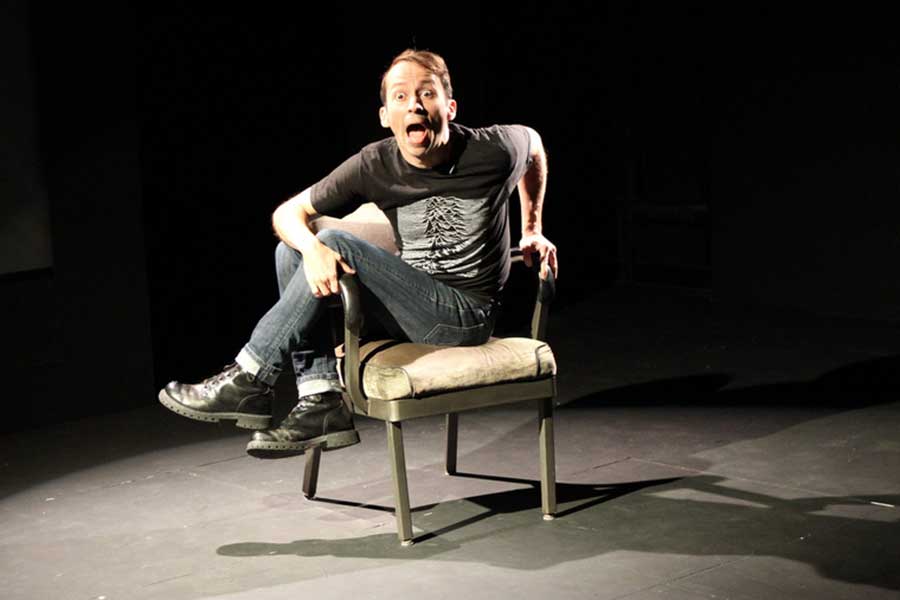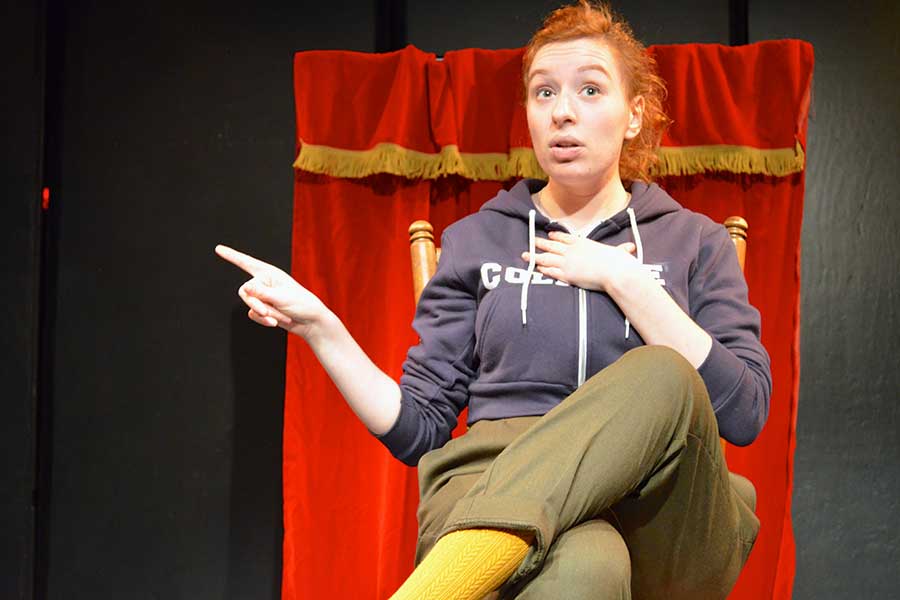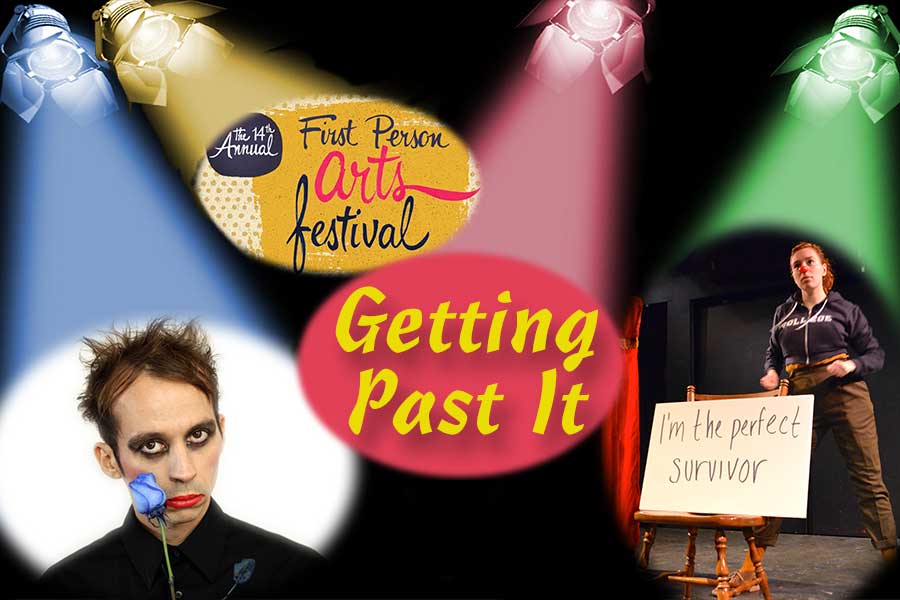Out artists and performers are mining their past struggles and trauma for their contributions to the 14th Annual First Person Arts Festival, running through Nov. 15 at venues across Philadelphia.
Acclaimed performer and memoir author David Crabb is bringing the Philadelphia premiere of his autobiographical “Bad Kid” to this year’s festival, the true story of a Goth boy who wanted to be anywhere but the middle of Texas in 1991.
In the days before widespread and accessible Internet use, and before alternative music exploded in popularity, we imagine Texas in the early ’90s wasn’t exactly a hotbed of acceptance.
“It depends on where you were,” Crabb said. “If you were in Austin or Dallas, those were big cities that felt like Southern-fried versions of Atlanta or Chicago. You had enough people. Now, San Antonio, I think, is the eighth-biggest city in the nation. Then they were enough of cosmopolitan places where you could find freaks, but they were harder to find than they would be in New York. It was in the middle of high school when I moved to a small town in Texas that everything sort of changed. Small-town Texas was kind of like the 1950s and ’60s, especially in these farming towns where you didn’t have a lot of culture outside of what you saw on cable television.”

So we asked Crabb how he coped.
“Drugs,” he said. “No, I’m sort of kidding, but I’m not. For a long time, I stayed to myself. It was a depressing situation to be in. I was a 14- and 15-year-old who wouldn’t socialize with people. But my freshman year of high school I kind of found the weirdos and freaks. I started seeing them pop up in the food court at the mall and the cafeteria at school. We sort of found each other as we changed and became a support system of weirdos for each other.”
Crabb added that, back then, while his family wasn’t overtly negative about his Goth interests, they weren’t very supportive of them either.
“It was the way that I grew up that kind of kept it on the down-low,” he said. “They knew I liked depressing British music and wore a lot of black. But I reserved the dog collars and painted fingernails for either school or the industrial teen club on the weekends. So I had a bit of a separation there.”
Crabb said his sexuality might have been intertwined with his interest in Goth culture, but at the time he didn’t recognize the connection between the two.
“At the time they seemed totally unrelated,” he said. “As an adult looking back, there was something really cool about having all the shame about who you were and then I met these group of kids who wore black and love smoking cloves and wearing vintage garb. To them, your sexuality was nothing. It was the least interesting thing about you. There was something refreshing about finding those people in that sense. And even though I didn’t realize the two things were connected, I do feel like I used the fashion-culture aspect of being Goth as sort of an entrance into being open about who I was.”
Crabb said that, even though younger generations now have the Internet and social media to keep them connected to like-minded peers, they can still find themselves in the same cultural and social isolation he had to deal with in his day.
“There’s the Internet and young people’s ability to communicate with each other without having to be with each other,” he said. “It’s kind of a great thing in a lot of ways. It’s allowed kids in the Bible Belt to find friends in other places online. But there is an isolation and morose sensibility about your future and romance that a lot of kids have when they are 15 and 16 years old. And I think regardless of the Internet and connections, that feeling of hopelessness is there for a lot of kids. I think the Internet and connections can help in that sense but I think that feeling can be forever.”
Another show seeking to heal past wounds through storytelling is “Post Traumatic Super Delightful (PTSD),” a one-woman show written and performed by Antonia Lassar addressing her own experience of sexual violence, as well as the art of clowning.
Yes, we know that sexual violence and clowns usually occupy the top tiers on the list of things people loathe more than anything, but Lassar said the two work well together in this context.
“Both clowning and sexual violence are the stuff generally that is traumatizing for people,” she said. “But I think that is a misconception. Clowning specifically in a historical context has been used to address traumas. There are clowns in a lot of Asian cultures; they were the truth-sayers of the community. So I think it’s a productive way to look at the source of trauma in a community with an honesty and vulnerability that is not found elsewhere. And then sexual violence, I think the general conversation around it focuses so much on the trauma that it can traumatize people out of the conversation, even people who have never experienced sexual violence. Clowning is an effective way to look at the vulnerability and human truth in this issue of sexual violence. It is kind of a struggle getting people in the door, but once they are, they see it as a really positive experience.”

Lassar added that, while the show does have humorous elements to it, she wants audiences to know it is not meant to be seen as a joke.
“I don’t call the show a comedy,” she said. “I don’t think that it’s a funny show either. I think that it’s a show that uses laughter because I think laughter at its core is a signal for human connection, which can be the first step in communal healing. So what we’re looking at with the show is what happens with an entire community that has likely been traumatized by sexual violence in their community and outside of that community, when that community can get together and laugh together, what kind of connections does that open up interpersonally that could be the first step in healing. I’m really careful to acknowledge that we are not making light of rape. There are no rape jokes. Rape is not funny. But in the healing process, there is space for laughter.”
Besides festivals, Lassar takes this show on tours of college campuses and crisis centers across the United States and Canada. She said colleges especially are venues where she wants to present the production.
“Every college has its own issue,” she said. “Some want to address it through policy, some through programs like this one. It really depends. Some colleges don’t want to acknowledge that they have a problem yet. Some are excited to do everything they can. There’s not really one college experience.”
Given the personal nature of the story, we asked Lassar if this show was part of her healing process, or a result of it.
“My healing process came first,” she said. “I had been creating art about my own trauma for years and it was all self-therapeutic, as opposed to communally therapeutic. For me, it was a really powerful part of my healing process, but I also didn’t release it to the greater public because sometimes it can be a little triggering for people if they’re not getting the healing out of it. ‘PTSD’ came out of many years of processing my trauma to a point where I could start directing it outwardly and direct the show in a therapeutic direction for the community, versus myself. I’m going to be healing my whole life but at some point I can start creating art that heals the community too.”
Antonia Lassar performs “Post Traumatic Super Delightful (PTSD)” 7 p.m. Nov. 13 at Christ Church Sanctuary, 20 N. American St.
David Crabb performs “Bad Kid” 9 p.m. Nov. 13 at Christ Church Neighborhood House, 20 N. American St.
For more information on these shows and other First Person Arts Festival shows and events, visit www.firstpersonarts.org.
